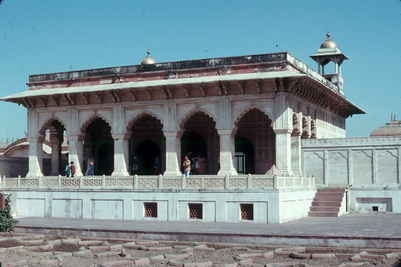 =0=
=0=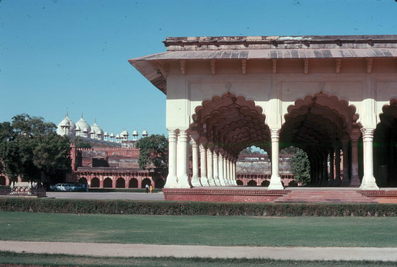 =0=
=0=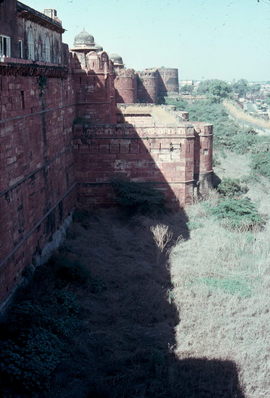 =0=
=0=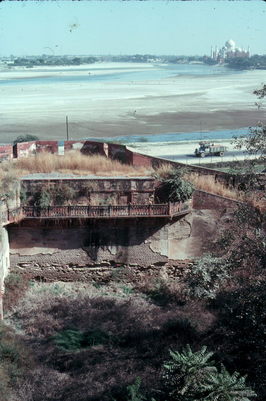 =0=
=0=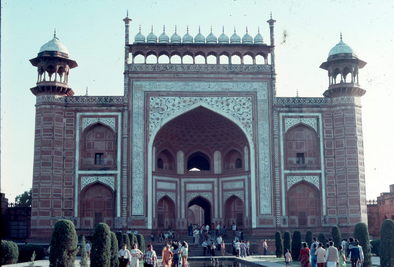 =0=
=0=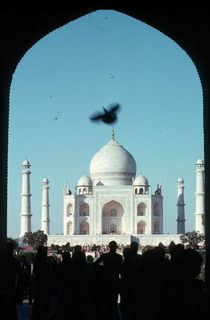 =0=
=0= =0=
=0=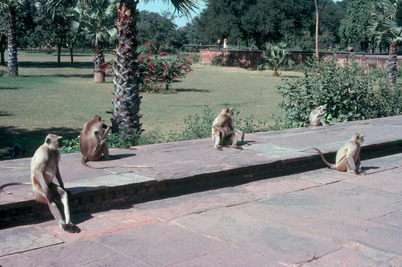 =0=
=0=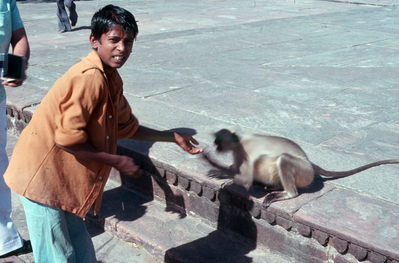 =0=
=0=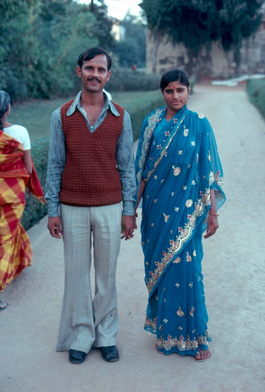 =0=
=0=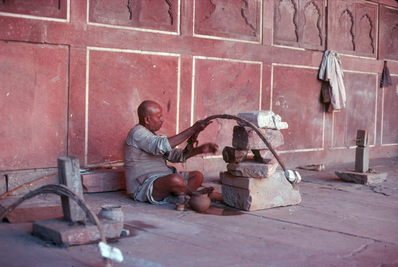 =0=
=0=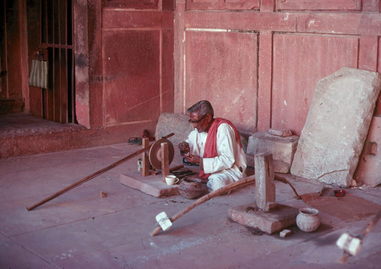 =0=
=0=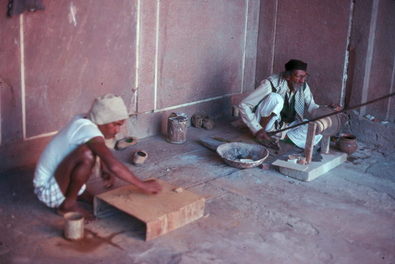 =0=
=0=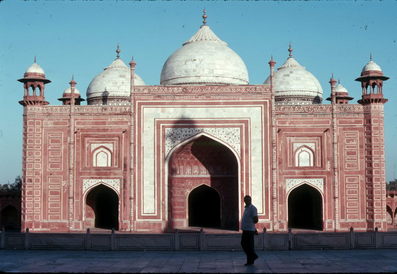 =0=
=0= =0=
=0= |
 =0=
=0= |
| Above are a front view and side view of a pavillion that we thought was particularly with the pretty arches that lines up so nicely. This is a view of the outside wall from the queen's section of the palace. |  =0=
=0= |
| This is another view of from the Red Fort, but this view is of the lower battlements which faced the river that the Red Fort is on. Across the river you can see the Taj Mahal which we visited later. The emperor who built the Taj Mahal was madly in love with it (and many people emphasized the mad part). After completing the Taj Mahal (which he had to tax his people very heavily to build), he started work on a Black Mahal which would be just to the left of the Taj Mahal. He even started construction on it and laid the foundations when he son deposed him. He was then imprisoned in the cubicle that we took this picture from. There were diamonds inlaid into the walls so that whatever direction he looked he could see the Taj Mahal (which raises the question of was the son being kind or cruel). Of course when we were there the diamonds had been removed (when the city was sacked in 1200 by ...), but one wall had had the jewels replaced with glass jewels to give some idea of the effect. |  =0=
=0= |
 =0=
=0= |
 =0=
=0= |
| That said, our next stop was the Taj Mahal. As you approach the Taj Mahal you see the gate building on the left above. It looks the same from the front and back, so this picture is actually taken from the back as the front had also sorts of buses and crowds and such, and didn't make such a nice picture. The other picture above is the view of the Taj Mahal that you would see as you passed through the gateway. This is the view of the Taj Mahal with the reflecting pool on the approach. I had often heard that there was an optical illusion with the Taj Mahal and I thought that it was made to look larger than it really was. However, it was far nicer than my expectations and none of the pictures of slides I have seen of it really do it justice. The 'optical illusion' is that the two minarets which are closest to the center are actually the same size as the ones on the outside. The are just placed on a square and those are farther away. That doesn't sound like an optical illusion, just regular depth perception. We were told that the Taj Mahal was most beautiful by the light of the full moon, but we didn't make the effort to see it then. |  =0=
=0= |
 =0=
=0= |
 =0=
=0= |
| As you walked along the reflecting pool to the Taj Mahal there were about eight monkeys out loose (consistent with the laid back attitudes of many people in India) as shown above. In the picture on the right I was going to take a picture of the monkey when the boy scampered in and got into the picture and then held his hand out for money. As I hadn't asked him to get into the picture I didn't give him anything and he just went away. This picture is a couple who were on our tour. They were quite well educated, spoke English quite well and were good examples of Indian upper classes in their common dress (with the men wearing Western slacks and shirt and sleeveless sweater). The Taj Mahal is in a large garden area, perhaps, say 10 acres, and along the outside of the garden area there were artisans who were practicing the traditional arts which would have been used to construct the Taj Mahal as shown below. On the left is a man drilling into sandstone using a bow and cord to twirl the drill and drill a hole for an inlaid jewel. Next to that is a picture of a man with a pole that is used to spin a grinder which we would use while it was spinning. These men didn't ask for any tips are were quite friendly and happy for us to take pictures and such. We assumed that they were paid by the government to encourage tourism. India was quite hard pressed at the time for foreign currency witht he result that prices were really low for most everything. Barbara and I spent only ten dollars a day for the seven days we visited India and that included hot meals, our room at the YMCA and tours. Really cheap. |  =0=
=0= |
 =0=
=0= |
 =0=
=0= |
| In Japan just the hostel we stayed in was over ten dollars a day and we avoided buying food (ate the food we brought with us) and taking taxis and such instead using buses and so on. However, India had the lowest prices we enocountered anywhere and we would take cabs and such. This picture is another man with the grinder device as well as man polishing a stone. |  =0=
=0= |
| To the right and left of the reflecting pool were two buildings, one a Mosque and one a guest house. This is a picture of one (I don't know which but they were identical in appearance so it really doesn't matter). |  =0=
=0= |
This page was last updated on November 22, 2005.